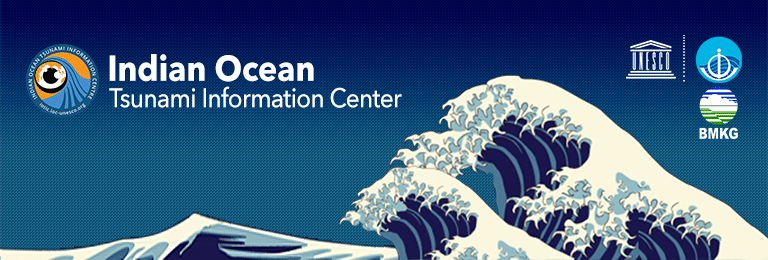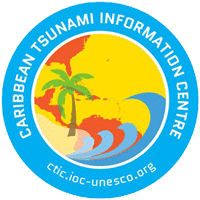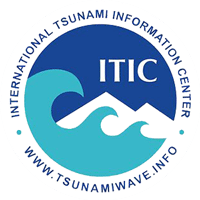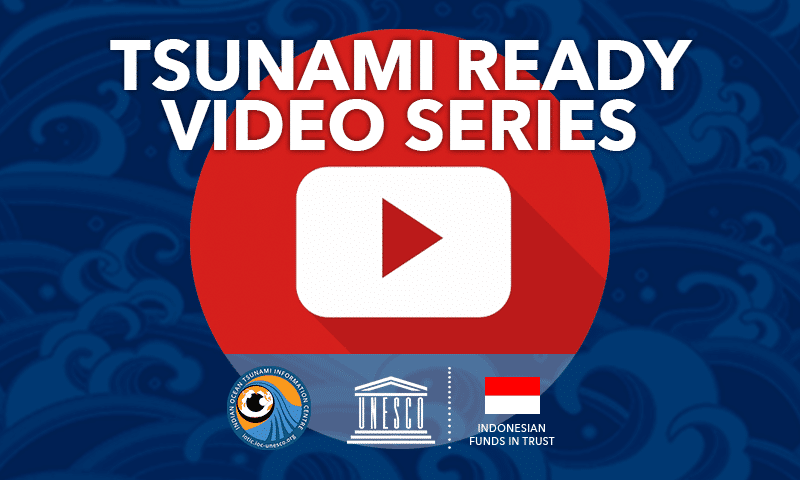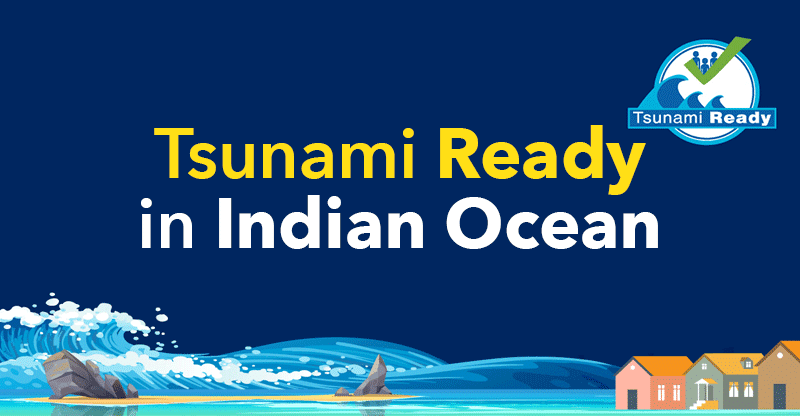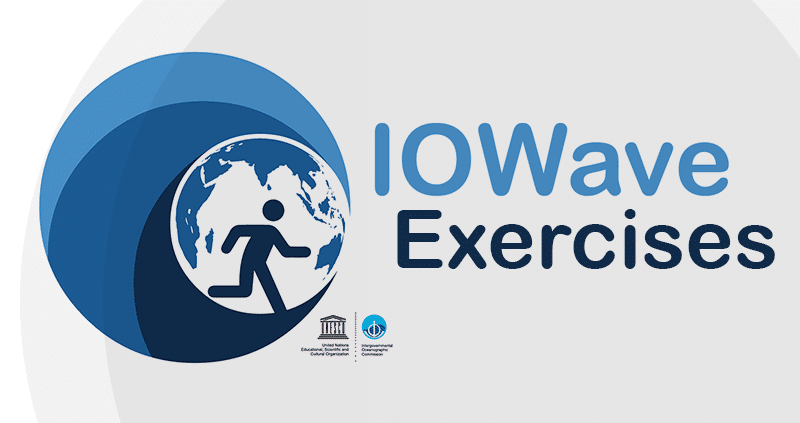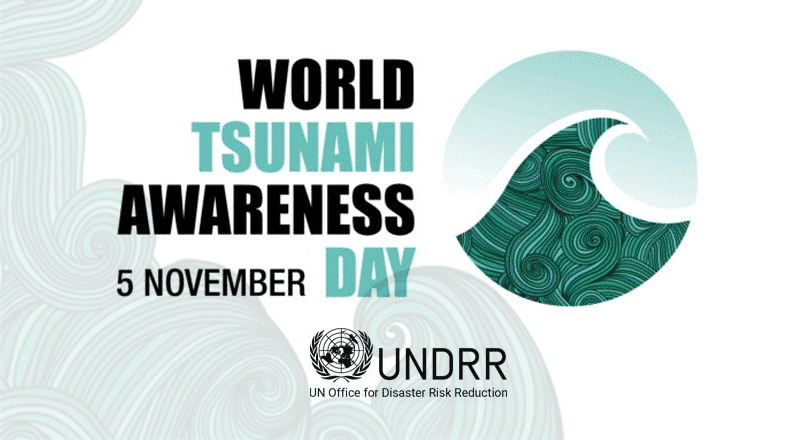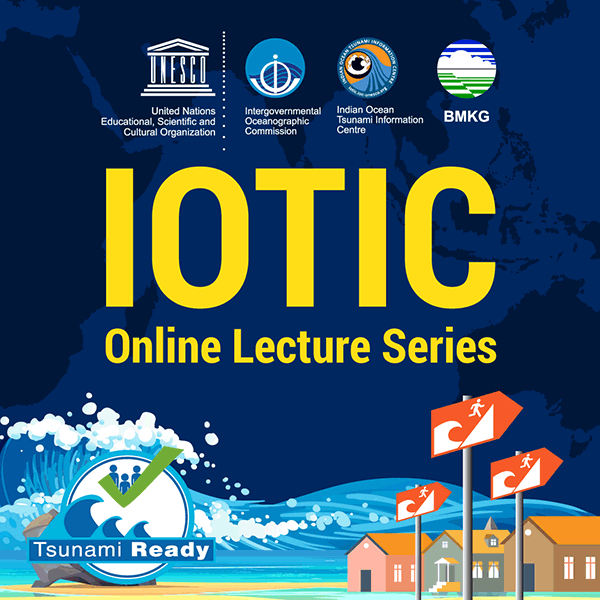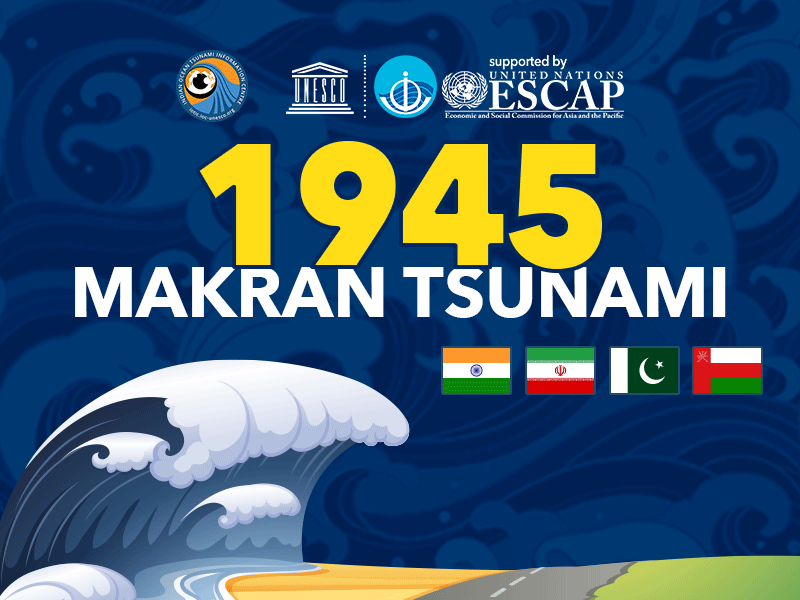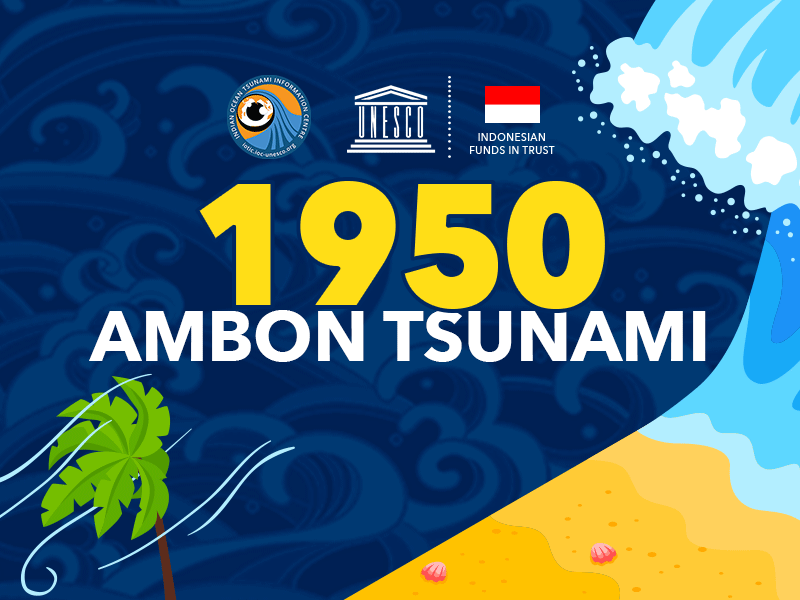Tsunami Warning Centres – An Overview
Laura Kong (ITIC), Charles McCreery (PTWC), Masahiro Yamamoto, IOC
April 2008
When a major undersea earthquake occurs near the coast and at a shallow depth, there is a possibility that a destructive tsunami can be generated that will impact near-by coasts within minutes and that can also traverse across entire ocean basins to wreak havoc 1000’s of miles away and up to 24 hours later. To alert far-away coasts, internationally-coordinated tsunami early warning systems have been established to provide alerts to countries on regional-to-distant tsunamis.
The mission of a Tsunami Warning Centre (TWC) is to provide early tsunami warnings on potentially destructive tsunamis. It provides this information to emergency officials, and as appropriate, directly to the public. In order to carry out its mission, the TWC uses local and global seismographic networks transmitting seismograms in real-time to continuously monitor seismicity in order to locate and size potentially tsunamigenic earthquakes. Earthquakes are the primary generators of tsunamis.
Alternatively, the national TWC can receive international tsunami advisories issued by the international tsunami warning centers (such as the PTWC, WC/ATWC, and JMA), and upon receiving, evaluate the threat to their country and further disseminate the relevant information to emergency authorities. TWC also uses sea-level networks reporting data in real and near real-time to verify the generation and evaluate the severity of a tsunami.
TWC then disseminate tsunami advisory and warning messages to designated national or local authorities for their subsequent action. TWC must respond fast, be as accurate as possible, and be reliable in order to be effective.
The requirement for the amount of time it takes a TWC to respond with an alert message following a potentially tsunamigenic earthquake depends upon how quickly the tsunami would strike the coast, how long it would take persons at risk to move to a safe location, and what is scientifically and technically reasonable to achieve.
These factors may vary between TWCs, the coasts they are responsible for, and the potential tsunami source zones. Sample response times that have been achieved by existing TWCs are shown below.
Tsunami Type Typical Time to Impact TWC Response Time
- Local: 0-1 hr 2-5 min
- Regional: 1-2 hr 5-10 min
- Distant >2 hr : 10-20 min
TWCs acquire data and disseminate advisory messages through multiple communications paths and should have redundant and backup methods and services in case of primary service failures. Routine communications tests are carried out to ensure that telecommunications lines are working.
TWC should provide a Users Guide for customers who will receive, and have to interpret and take action based on the TWC advisories.
When a large earthquake occurs, Tsunami Warning Centre personnel determine the earthquakes hypocentre, the initial rupture point of the earthquake, and its magnitude. If the hypocentre is under or near the ocean and not too deep within the earth, and if the magnitude is sufficiently large, then tsunami generation is possible. On the basis of this seismic evidence, the Centre issues a local tsunami warning or advisory to areas located near the epicenter.
A regional or distant tsunami watch or advisory is also issued to areas located further from the epicenter of the magnitude is so large there is the possibility of a long-range destructive tsunami. All remaining areas may also be notified that an event has occurred. The initial bulletin tells participants that an earthquake has occurred, where and when it occurred, and that a destructive tsunami is possible. For a local tsunami warning, the advisory may suggest immediate evacuation inland and to higher ground, or to clear the beach, since waves are imminent.
Confirmation of a tsunami usually comes from sea level stations located nearest the earthquake. In the case of local tsunamis, it is best to have a dense network of sea-level instruments so that close-by stations can confirm the ac tsunami within minutes of its generation. At the regional or distant scale, confirmation can rely on a sparser network of gauges and take up to 1 or 2 hours.
Fortunately, most large earthquakes with tsunamigenic potential do not generate long-range destructive tsunamis and the warning or watch will be canceled. But if a potentially destructive, long-range tsunami is measured, a regional TWC will issue an ocean-wide tsunami warning to advise designated national authorities.
This message alerts all warning system participants to the approach of potentially destructive tsunami waves and provides estimated tsunami arrival times for key locations. Because tsunamis move through the water in accordance with known physical laws, estimated arrival times can be quickly computed.
Tsunami wave forecasts or estimated wave heights may also be included if there is enough data and the model results are judged by TWC staff to be reasonable. Typically, during a tsunami event, bulletins containing updated information are issued at least hourly, until the tsunami has crossed the entire ocean or additional evidence is received to indicate there is no further tsunami threat.
Tsunami warnings are canceled when the TWC judges that there are no longer destructive tsunami waves being generated – this does not mean that is it safe for the public to return to the evacuated coastlines.
Messages are disseminated in accordance with procedures outlined in the Operational Users Guide for the Tsunami Warning and Mitigation System area of coverage (such as the Caribbean, Indian Ocean, Mediterranean, and North Atlantic, and Pacific).
Emergency authorities, such as the National Disaster Management Office (NDMO), civil defense, or emergency operations centers, have the responsibility for immediately interpreting the science-based alerts issued by the TWC (international, regional, national, and/or local), and quickly disseminating safety information to the public on what to do.
They are also responsible for informing the public when it is safe for them to return to the evacuated coastlines; due to structural damage, debris, and other life safety concerns, the ‘all-clear’ to return may not be issued by the local authority for hours or even weeks after the event. The NDMO/Civil Defense can also have the ongoing responsibility for educating the public concerning the dangers of tsunamis and for developing safety measures to be taken to avoid the loss of life and reduce property damage.
Current operational weaknesses of tsunami warning centers include an inability to detect landslide and volcanic sources, and an inability to provide early-enough warnings for local tsunamis except in a few areas. Additionally, to ensure public safety and provide the fastest early warning, TWC initially issue watches and warnings based only on earthquake information.
Most often these watches and warnings are later canceled when sea level information confirms non-destructive waves. This practice may reduce the credibility of the TWC for issuing warnings and cause the public to erroneously presume that all such alerts are false alarms.
The article is taken from the ITIC website (www.itic.ioc-unesco.org)
Other Files
